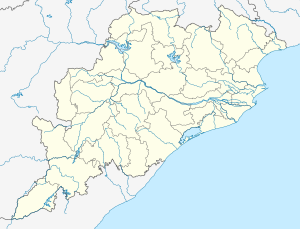Location in Odisha View of Sambalpur railway division in Odisha map | |
| Overview | |
|---|---|
| Headquarters | Sambalpur |
| Locale | Odisha, India |
| Dates of operation | 1951–present |
| Predecessor | East Coast Railway |
| Other | |
| Website | East Coast Railways website |
Sambalpur railway division is one of the three railway divisions under East Coast Railway zone of Indian Railways. This railway division was formed on 5 November 1951 and its headquarter is located at Sambalpur in the state of Odisha of India.
Waltair railway division and Khurda Road railway division are the other two railway divisions under ECoR Zone headquartered at Bhubaneshwar.[1][2]
List of railway stations and towns[edit]
The list includes the stations under the Sambalpur railway division and their station category.[3][4]
| Category of station | No. of stations | Names of stations |
|---|---|---|
| A-1 | 0 | |
| A | 1 | Sambalpur |
| B | - | - |
| C suburban station |
- | - |
| D | - | - |
| E | - | - |
| F halt station |
- | - |
| Total | - | - |
Stations closed for Passengers -
References[edit]
- ^ "Zones and their Divisions in Indian Railways" (PDF). Indian Railways. Archived from the original (PDF) on 19 March 2015. Retrieved 13 January 2016.
- ^ "Sambalpur Railway Division". Railway Board. Western Railway zone. Archived from the original on 31 January 2011. Retrieved 13 January 2016.
- ^ "Statement showing Category-wise No. of stations in IR based on Pass. earning of 2011" (PDF). Retrieved 15 January 2016.
- ^ "PASSENGER AMENITIES - CRITERIA= For Categorisation Of Stations" (PDF). Archived from the original (PDF) on 4 March 2016. Retrieved 15 January 2016.

Well, that’s interesting to know that Psilotum nudum are known as whisk ferns. Psilotum nudum is the commoner species of the two. While the P. flaccidum is a rare species and is found in the tropical islands. Both the species are usually epiphytic in habit and grow upon tree ferns. These species may also be terrestrial and grow in humus or in the crevices of the rocks.
View the detailed Guide of Psilotum nudum: Detailed Study Of Psilotum Nudum (Whisk Fern), Classification, Anatomy, Reproduction